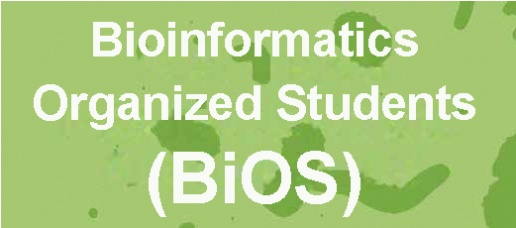Fall 2021 Student Seminars
September 8
Dileep Kishore
Advisors: Daniel Segrè & Pankaj Mehta
Title: Control of microbial communities in bioreactors using deep reinforcement learning
Abstract:
Microorganisms can be engineered to produce commercially valuable molecules such as antibiotics, biofuels, and pharmaceutical products. Individual microbial species might be subjected to high metabolic load or might be incapable of simultaneously catalyzing the multiple reactions needed for a specific metabolic objective. Synthetic microbial consortia alleviate these limitations by distributing the required pathways and reactions among the individual species and are emerging as an important approach in biomanufacturing. However, owing to the complex interdependence between organisms and environments, the rational design of synthetic communities still constitutes an unresolved challenge.
欧
Aaron Chevalier
Advisor: Josh Campbell
Title: The Mutational Signature Comprehensive Analysis Toolkit (musicatk) for the discovery, prediction, and exploration of mutational signatures
Ab
September 22
Xingyi Shi
Advisors: Marc Lenburg & Jennifer Beane
Title: NSCLC subtype-associated molecular and cellular alterations in the normal-appearing bronchial epithelium
Ab
Dakota Hawkins
Advisors: Cynthia A. Bradham & W. Evan Johnson
Title: ICAT: A Novel Method for Identifying Cell-types Across Treatments in Single-Cell RNA Sequencing Data
Ab
October 6
Anthony Federico
Advisor: Stefano Monti
Title: Structure Learning for Gene Regulatory Networks
Ab
Nicholas O’Neill
Advisors: Lindsay Farrer & Xiaoling Zhang
Title: Bulk Brain Tissue Cell Type Deconvolution with Bias Correction for Single-Nuclei RNA-Seq
Abstract:
Quantifying cell type percentages from bulk tissue RNA-sequencing enables researchers to better understand the components making up complex systems. When a single-cell RNA-sequencing (scRNA-seq) reference dataset is available deconvolution algorithms calculate these percentages without the need for additional sequencing. scRNA-seq data is largely unavailable for human brain due to experimental difficulty, but various single-nuclei RNA-sequencing (snRNA-seq) datasets are available. MuSiC is a popular and accurate deconvolution algorithm based on weighted non-negative least squares regression with multi-subject single-cell expression reference. Like other methods, it struggles to compensate for the strong bias between bulk and snRNA-seq. We propose a modification to MuSiC’s weighing scheme to compensate for this sequencing bias, named mMuSiC. We show that this modification improves estimation accuracy in simulated and real human brain data.
October 20
Jamie Strampe
Advisor: John Connor & Tom Kepler
Title: Differential Expression Analysis of Bundibugyo Virus-Infected Macaques
Ab
Boting Ning
Advisors: Avrum Spira & Marc Lenburg
Title: DReAmiR: Differential regulation analysis quantifies miRNA regulatory roles and molecular subtype-specific targets
Ab
November 3
Rui Hong
Advisor: Josh Campbell
Title: Novel Method for Identifying Expression Pattern Associated with Single Cell Copy Number Variants
Ab
Lucas Schiffer
Advisor: Evan Johnson
Title: tuberculosis – Human Host Gene Expression Data for Machine Learning
Ab
November 17
Kritika Karri
Advisor:David Waxman
Title: Transcriptomic Landscape of lncRNAs in Non-alcoholic steatohepatitis (NASH) and Liver fibrosis using Single-cell RNA sequencing of Mouse Liver
Ab
Howard Fan
Advisor: W. Evan Johnson
Title: Batch Effect Correction and Regional Variation in Oral Microbiome among Adult African American Women in the US
Abstract:
The oral microbiome has been linked to several oral infectious diseases, including dental caries, gingivitis, and periodontitis. As changes in oral microbial community compositions have been shown to be associated with oral health and disease, it is important to examine factors that can influence the oral microbiome with one such factor being the geographical location. However, one major obstacle in microbiome research is the high sensitivity of microbial compositions to their environment, which can result in batch effect. We investigate the use of ComBat-Seq to adjust for batch effect in microbiome data obtained from 648 participants in the Black Women’s Health Study. After adjustment, we identify differentially abundant microbes residing in the oral microbiome that differ by geographical region.
December 8
Ethel Nankya
Advisor: W. Evan Johnson
Title: Nasal microbiome biomarker predictive of lung cancer among high-risk smokers in the indeterminate pulmonary nodule setting
Abstract:
In the United States and worldwide, lung cancer is the leading cause of cancer related mortality with approximately 2 million new lung cancer cases diagnosed in the world every year. Reports indicate a 5-year survival rate for lung cancer being only 18.6%, lower than many other leading cancer sites. The lower survival rates could be partly due to the fact the most lung cancer cases were diagnosed at later stages that were not curable. The advent of better screening methods using low dose CT (LDCT), as demonstrated in the National Lung Screening Trial (NLST), showed that better screening methods can lead to an increase in the number of lung cancer cases being diagnosed early and that there was a significant reduction in mortality (20%) in the LDCT arm compared to the chest Xray arm
Although LDCT improves diagnoses of lung cancer cases at an earlier stage, this has posed a challenge in predicting which detected lung nodules will become malignant. There has been an increase in the number of indeterminate pulmonary nodules (IPN) being detected and it is crucial that these IPNs are evaluated for risk of them being malignant.
The use of molecular biomarkers on a variety of biospecimens seems to be a promising way of improving risk stratification for lung cancer among most at risk individuals while improving decision making regarding appropriate follow-up. The airway epithelium can be used to collect samples that can aid in development of molecular biomarkers in the IPN and lung cancer prediction setting. This is based on two proven concepts. 1) The Etiologic Field of Injury and the 2) the field of cancerization.
The role of microbiome in lung cancer is still unknown, however, it has been postulated in COPD that cigarette smoking disrupts the airway epithelium, causing dysbiosis in the airway, leading to an increased susceptibility to respiratory pathogens. This in turn allows presence of more virulent microbes that cause inflammatory associated events which could lead to increased risk of lung cancer. To date, there is no nasal microbiome biomarker that can be used as a classifier to discriminate between malignant and benign IPNs. It is therefore imperative that a less invasive nasal microbiome biomarker predictive of lung cancer among current / former smokers in the IPN setting is developed.




